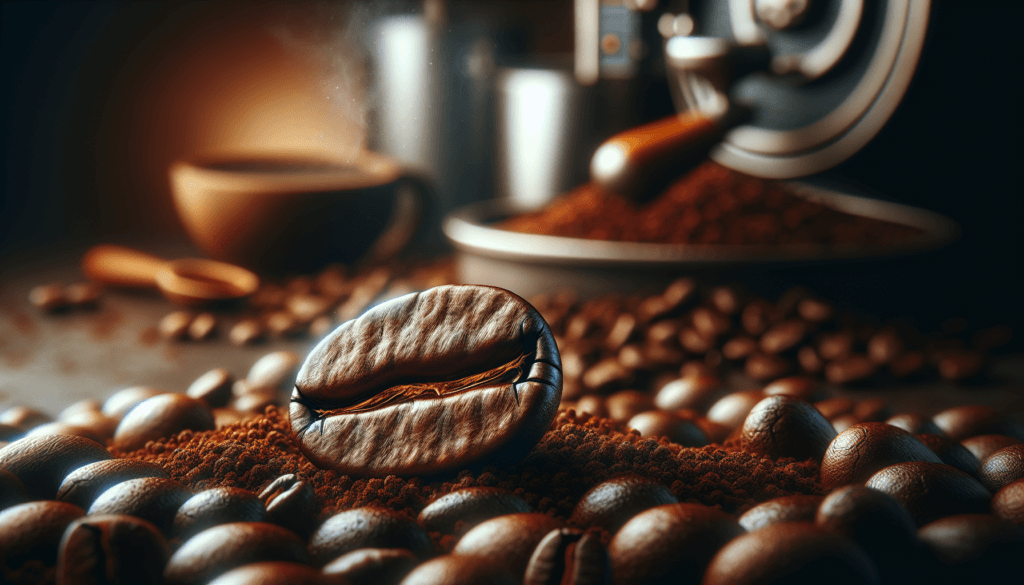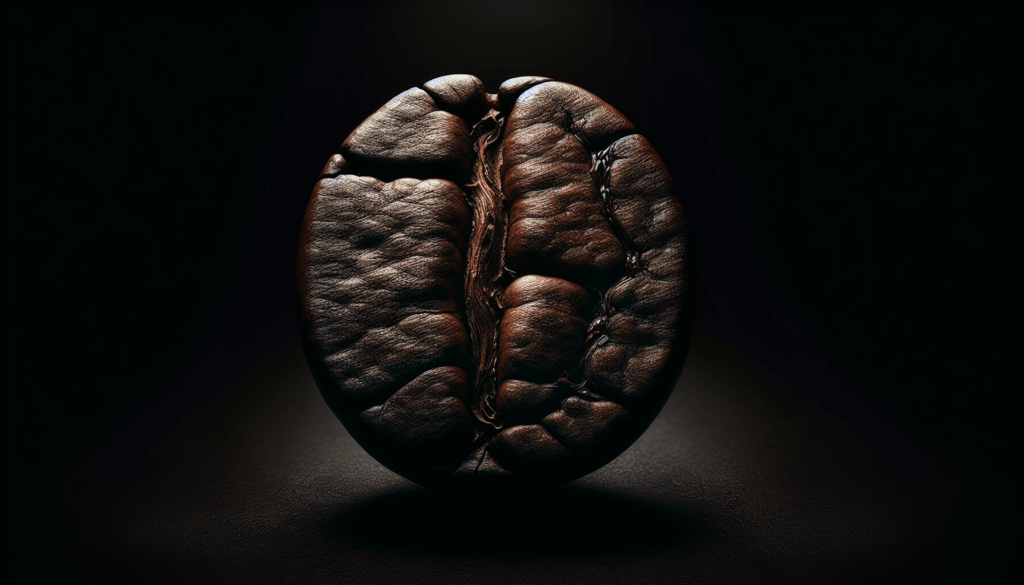In the fascinating world of coffee, there is an artistry behind creating the perfect cup of joe. It begins with understanding the art of coffee roasting profiles. Each roast profile carries its own unique flavors and characteristics, enhancing the overall coffee drinking experience. From light to dark roasts, each profile offers a distinct taste profile that can be tailored to your personal preference. Embark on a journey to explore the intricacies and nuances of coffee roasting profiles, and unlock a whole new level of enjoyment in your daily brew.
The Basics of Coffee Roasting Profiles
Understanding Roasting Profiles
When it comes to coffee, the term “roasting profiles” refers to the specific combination of time and temperature used to roast coffee beans. Each roasting profile produces a distinct flavor profile, aroma, and color in the final cup of coffee. Understanding roasting profiles is essential for coffee enthusiasts and professionals alike, as it allows them to explore and appreciate the wide range of flavors that coffee can offer.
Why Roasting Profiles Matter
Roasting profiles play a crucial role in determining the overall characteristics of the coffee. The duration and intensity of the roasting process directly impact the flavor, acidity, body, and aroma of the brewed coffee. By experimenting with different roasting profiles, coffee roasters can create a variety of flavor profiles, ranging from delicate and nuanced to bold and intense. Roasting profiles also allow for the development of unique and signature flavors, making each cup of coffee a truly special experience.
Types of Roasting Styles
There are various roasting styles or levels that coffee beans can be roasted to, each providing a different flavor profile and visual appearance. These styles include light roasts, medium roasts, and dark roasts. Light roasts are known for their delicate and tea-like flavors, with a light brown color and a high level of acidity. Medium roasts strike a balance between acidity and body, offering a more complex flavor profile and a medium brown color. Dark roasts, on the other hand, result in bold and intense flavors, with a dark brown or black color and a lower acidity level.
Factors Influencing Coffee Roasting Profiles
Bean Variety
Different coffee bean varieties, such as Arabica and Robusta, have unique characteristics that can influence the roasting process. Arabica beans are often favored for their delicate flavors and acidity, while Robusta beans tend to have a stronger and more bitter taste. Roasting profiles must take into account the specific attributes of each bean variety to bring out their best qualities.
Origin and Altitude
The region and altitude at which coffee beans are grown also play a significant role in the roasting process. Coffee beans from different regions can have distinct flavor profiles based on the climate, soil conditions, and other environmental factors. For example, beans from high-altitude regions often have a brighter acidity and more vibrant flavors compared to beans grown at lower elevations.
Processing Methods
The way coffee beans are processed after being harvested can greatly impact the roasting profiles. Different processing methods, such as natural, washed, or honey process, can affect the moisture content and flavor development in the beans. Roasters must consider the processing method when determining the appropriate roasting profile to achieve the desired flavor characteristics.
Roast Level
The roast level chosen for coffee beans is a key factor in determining the roasting profile. Lighter roasts preserve the original flavors of the beans, while darker roasts bring out more caramelized and roasted notes. Different levels of roasting allow for a wide range of flavor possibilities, and the preferred roast level may vary depending on personal preferences and brewing methods.
Roasting Equipment
The type of roasting equipment used also influences the roasting profiles. There are various methods of roasting, including drum roasting, fluid bed roasting, and hot air roasting. Each method may have different heat distribution and control, resulting in variations in the final roasting profile. Roasters must understand their equipment and make adjustments accordingly to achieve consistent and desirable results.

Roasting Process and its Phases
Preheating and Drying Phase
The roasting process begins with preheating the roasting chamber to the desired temperature. Once the chamber is heated, the coffee beans are added, and the drying phase begins. During this phase, the moisture inside the beans is evaporated, and the beans undergo a physical and chemical transformation. This phase sets the foundation for the subsequent phases of the roasting process.
First Crack
The first crack is a significant moment in the roasting process. It occurs when the internal temperature of the beans reaches around 380-410 degrees Fahrenheit. At this point, the beans expand, and a cracking sound is heard. The first crack signifies that the beans have reached a light to medium roast level. The coffee’s acidity is usually high during this phase, and it is often preferred for its bright and tangy flavors.
Development Phase
After the first crack, the beans enter the development phase. This is where the flavors, aromas, and body of the coffee fully develop. Roasters carefully monitor the heat and time to achieve their desired roast profile. The length of this phase and the specific temperature are key factors in creating the unique flavor profile of the coffee.
Second Crack and Beyond
The second crack occurs at a higher temperature, typically around 435-445 degrees Fahrenheit. It is characterized by a more intense cracking sound as the remaining moisture in the beans rapidly expands. The second crack is usually associated with dark roast levels, where the coffee’s oils come to the surface, resulting in a shiny appearance. Beyond the second crack, the beans are roasted to a very dark level, often referred to as a French or Italian roast.
Roast Levels and Their Characteristics
Light Roasts: Delicate Flavors
Light roasts are typically roasted at a lower temperature and for a shorter duration. These roasts bring out the natural flavors of the beans, resulting in a bright and acidic cup of coffee. Light roasts tend to have a lighter body and exhibit floral, fruity, and tea-like characteristics. They are often preferred by those who enjoy the subtleties and complexities of coffee flavors.
Medium Roasts: Balanced and Complex
Medium roasts offer a balance between acidity, body, and flavor complexity. The beans are roasted for a slightly longer duration, allowing for the development of caramelized and roasted notes while still maintaining the original characteristics of the beans. Medium roasts are versatile and suitable for various brewing methods, offering a well-rounded cup with a medium body and a range of flavors that may include chocolate, nutty, or citrus notes.
Dark Roasts: Bold and Intense
Dark roasts are characterized by their bold and robust flavors. The beans are roasted at high temperatures for an extended period, resulting in deep caramelization and the presence of oils on the surface. Dark roasts have a heavy body and exhibit smoky, chocolatey, and roasted flavor profiles. While the acidity is generally lower in dark roasts, the intensity and richness of the flavors make them popular for espresso-based drinks and those who prefer a strong, full-bodied coffee experience.

Developing Roasting Profiles
Establishing Roasting Goals
Before diving into developing roasting profiles, it is crucial to establish clear goals and objectives. Roasters must define the desired flavor characteristics they want to achieve in their coffee. Whether it’s emphasizing fruity and floral notes or aiming for a rich and bold profile, having a clear vision will guide the roasting process.
Choosing the Right Roasting Style
Selecting the appropriate roasting style is essential in creating the desired flavor profile. Each roasting style brings out distinct characteristics in the beans. Light roasts enhance the nuanced flavors, while dark roasts emphasize the intensity and smokiness. Roasters must experiment and find the roast style that aligns with their goals and appeals to their target audience.
Adjusting Time and Temperature
The key to developing unique roasting profiles lies in the ability to adjust the time and temperature during the roasting process. Roasters can manipulate these variables to bring out specific flavors, enhance sweetness, or create desired acidity levels. Fine-tuning the roast by making precise adjustments ensures consistency and allows for the creation of new and exciting flavor profiles.
Monitoring Color and Aroma
Visual cues play an important role in developing roasting profiles. Roasters must carefully monitor the color of the beans throughout the roasting process. Lighter roasts tend to have a light brown color, while darker roasts range from medium brown to black. Additionally, aroma plays a crucial role in assessing the coffee’s development. The aroma should align with the desired flavor profile, indicating that the beans have reached the desired roast level.
Sampling and Cupping
Regular sampling and cupping sessions are essential in evaluating the flavor profiles of roasted coffee. Roasters should taste the coffee at different stages of the roasting process to understand how the flavor evolves. Cupping sessions involving multiple tasters help identify any inconsistencies or potential improvements in the roasting profiles. This feedback loop is critical for achieving consistency and continually refining the profiles.
Understanding Roast Development
Chemical Changes in Coffee Beans
During the roasting process, coffee beans undergo a series of chemical changes that dramatically impact their flavor. The heat causes the beans to release moisture and undergo the Maillard reaction, resulting in the development of complex flavors and aromas. The breakdown of sugars, amino acids, and other compounds within the beans contributes to the unique and desirable flavor characteristics found in a well-roasted coffee.
Balancing Acidity and Bitterness
Roasting profiles allow for the balancing of acidity and bitterness in the final cup of coffee. Lighter roasts, with their higher acidity, bring forward the vibrant and tangy flavors. As the roast level progresses towards the darker spectrum, the acidity decreases, and the bitterness becomes more pronounced. Achieving the right balance between these two elements is a skillful art that experienced roasters master.
Preserving Aromatics
Roasting profiles also play a vital role in preserving the aromatic compounds present in coffee beans. The aroma of coffee is a crucial aspect of the overall sensory experience. Different roasting profiles can bring out specific aromatics, such as floral or fruity notes. Proper control of the roasting process ensures that the delicate aromatics are not lost and are present in the final brewed coffee.
Roasting for Different Brew Methods
Each brew method interacts differently with the flavors of the roasted coffee. Roasters must consider the intended brewing method when developing roasting profiles. For example, for espresso-based drinks, a darker roast may be preferred to withstand the extraction process and create bolder flavors. On the other hand, pour-over or drip methods may benefit from a lighter roast that highlights the nuanced flavors.

Artistic Approaches in Roasting Profiles
Creating Signature Flavors
Roasting profiles offer an opportunity for roasters to create unique and signature flavors. By experimenting with different variables and combinations, roasters can develop their own distinct flavor profiles that set their coffee apart from others. This artistic approach allows for a personal touch and fosters creativity within the roasting process.
Blending and Single-Origin Roasts
Roasters can use their understanding of roasting profiles to create balanced and complex blends. By carefully selecting different beans and applying specific roasting profiles to each, roasters can create harmonious flavor combinations. Conversely, single-origin roasts allow for showcasing the unique qualities of a particular region or variety. Roasting profiles are tailored to enhance and highlight the inherent flavors of the single-origin beans.
Experimenting with Unique Roasting Techniques
Coffee roasting is an art that welcomes experimentation and innovation. Roasters often push the boundaries of traditional techniques to create new and exciting flavor profiles. This may involve unique combinations of time and temperature, exploring different levels of heat application, or utilizing alternative roasting methods. Through experimentation, roasters can uncover hidden flavors and push the boundaries of what coffee can offer.
The Impact of Roasting Profiles on Flavor
Tasting Notes and Flavor Profiles
Roasting profiles have a direct impact on the flavor profiles of coffee. The combination of time and temperature determines the balance of sweetness, acidity, bitterness, and other flavor components. Tasting notes, such as chocolate, citrus, or caramel, are a reflection of the roasting profiles and the unique characteristics of the beans. By understanding and manipulating roasting profiles, coffee professionals can achieve the desired flavor profiles and provide customers with a diverse range of options.
Highlighting Sweetness and Body
Roasting profiles can emphasize the inherent sweetness and body of coffee. By carefully controlling the caramelization of sugars during the roasting process, roasters can enhance the sweetness in their coffee. Lighter roasts tend to preserve more of the natural sweetness, while darker roasts develop deeper and richer caramelized flavors. Balancing the level of sweetness and body is crucial in achieving a well-rounded and enjoyable cup of coffee.
Enhancing Acidity
Acidity is a fundamental characteristic of coffee that adds brightness and complexity to the flavor profile. Roasting profiles can enhance or mellow the acidity, depending on the desired result. Lighter roasts generally have higher acidity, while darker roasts tend to have lower acidity. Roasters can manipulate the roasting profiles to highlight the specific acidity levels that best complement the intended flavor profile.
Developing Roast Specificity
Roasting profiles allow for the development of roast-specific flavors that cater to different preferences and tastes. Some coffee drinkers prefer a lighter roast to experience the delicate and nuanced flavors, while others gravitate towards a dark roast for a bolder and more robust flavor profile. By creating roast-specific profiles, roasters can meet the varied preferences of their customers and showcase the diversity within the world of coffee.

Adapting Roasting Profiles for Brewing
Matching Roasts to Brew Methods
Different brewing methods extract flavors differently, and roasting profiles should be adapted accordingly. For a pour-over or drip method, a medium to light roast may be preferable to highlight the complex flavors. On the other hand, espresso-based drinks often utilize darker roasts to withstand the intense extraction process. Roasters must consider the intended brew method to ensure that the coffee’s flavors are optimized for the specific brewing process.
Optimizing Extraction and Strength
Roasting profiles play a vital role in optimizing extraction and strength in brewed coffee. The degree of roast, grind size, and brew parameters all contribute to achieving the desired flavor and strength in the cup. Roasters must fine-tune their roasting profiles to strike a balance between optimal extraction and strength, resulting in a well-balanced and enjoyable cup of coffee.
Understanding Roast Degree Preferences
Different individuals have unique preferences when it comes to the roast degree of their coffee. Some may prefer the brightness and acidity of lighter roasts, while others enjoy the boldness and richness of darker roasts. Roasters must be aware of these preferences and offer a range of roasting profiles to cater to a diverse customer base. Understanding roast degree preferences opens up opportunities to introduce customers to new and exciting flavor experiences.
The Importance of Consistency in Coffee Roasting
Maintaining Consistent Roasting Profiles
Consistency is key in coffee roasting to ensure that each batch of coffee maintains the desired flavor profile. Roasters must closely follow and replicate their established roasting profiles to achieve consistency in each roast. This requires precision in time, temperature, and monitoring techniques. By maintaining a consistent roasting process, roasters can build trust with customers and deliver a consistently excellent product.
Monitoring Quality Control
Roasting profiles should be accompanied by diligent quality control measures to ensure that the coffee meets the desired standards. Regular cupping sessions, visual inspections, and aroma evaluations are crucial in identifying any defects or inconsistencies. By implementing thorough quality control processes, roasters can maintain high-quality coffee and address any issues promptly.
Record-Keeping and Roast Reproducibility
Record-keeping is an essential aspect of maintaining consistency in coffee roasting. Roasters should carefully document and record the details of each roast, including the roasting profile, batch size, and any observations. These records serve as references for future roasts and aid in recreating specific flavor profiles. By prioritizing roast reproducibility, roasters can ensure that each batch of coffee meets the established quality standards.
In conclusion, understanding and mastering coffee roasting profiles is a crucial aspect of the art of coffee. By comprehending the impact of factors such as bean variety, origin, processing methods, and roast level, roasters can develop unique and desirable flavor profiles. Artistic approaches, experimentation, and a focus on consistency contribute to the creation of signature flavors and a diverse range of coffee experiences. By embracing the art of coffee roasting profiles, coffee enthusiasts and professionals can truly appreciate the breadth and depth of flavors that coffee has to offer.



